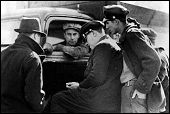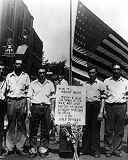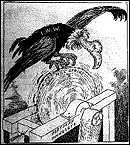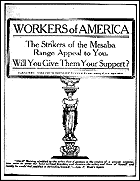Workers learned the hard way that serious reform required serious organization and action. “Labor organizing efforts began in Minnesota right after the Civil War. …Unions were formed to negotiate for workers dwarfed by the power of employers. There was concern, of course, for higher wages. But there was concern as well that the dignity of labor be recognized, and that working conditions be improved. There was also an insistence that the state be willing to intervene on behalf of working men and women, instead of automatically backing employers.”
The evolution of organized labor was not without pain and suffering within the movements, or in their dealings with business, industry, government and the general public. Enduring strife, injury and even death (risks involved in confrontations and negotiations), organized unions have made lasting contributions to the quality of life of all Americans.
“Workers had few legal rights, but their sense of what was both natural and moral helped them understand how unions could serve them and the commonwealth. When they banded together and bargained collectively, they slowly won concessions from employers.” [WFMFED] |
|
|
Strength Through Unions

Truckers union men stopping a driver to see
if he is a union man, October, 1934
St. Paul Daily News & Minnesota Historical Society

Flag erected at spot where Henry Ness, a striker, was slain
during the Minneapolis drivers strike, July 20, 1934
Minnesota Historical Society

Cartoon, “Looking for a new place to roost.”
(International Workers of the World (I.W.W.)
and the sawmill strike in northern Minnesota, 1916
Duluth News Tribune & Minnesota Historical Society

Strike Relief poster, ca. 1916
Minnesota Historical Society
|








